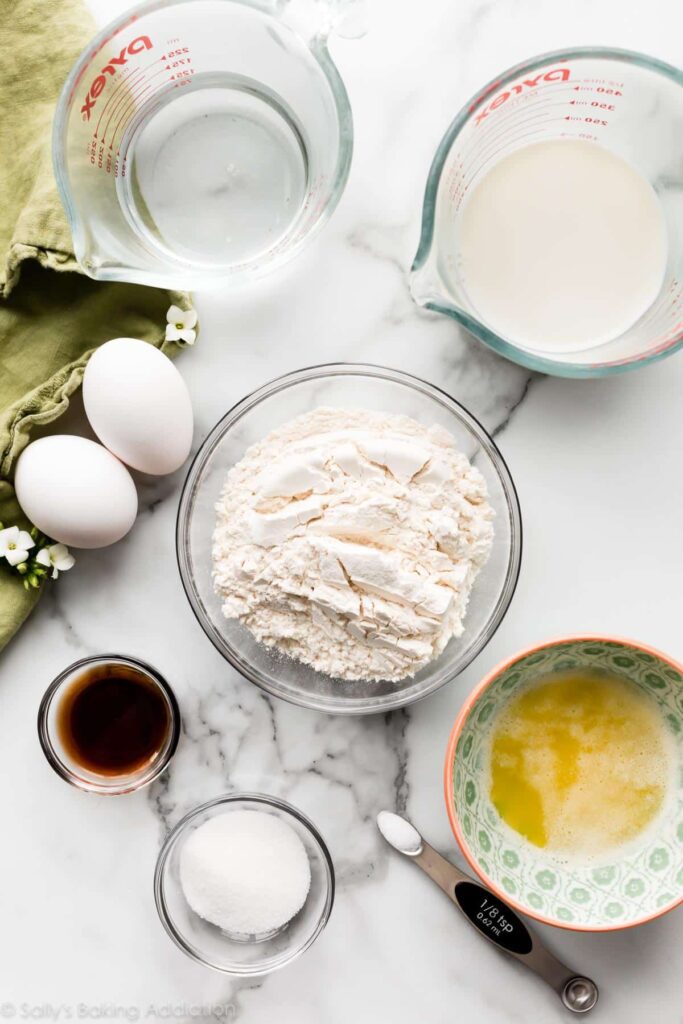Flour is crucial in baking as it provides structure and texture to baked goods. Different types of flour have varying protein content, making them suitable for specific baked goods. Sugar not only adds sweetness but also affects the texture and color of baked goods, with different types offering unique flavors and properties. Yeast, a living organism, leavens bread and adds flavor and a light texture. Understanding the properties of these ingredients is key to successful baking, and using them in moderation is important for health. With knowledge of flour, sugar, and yeast, home bakers can create delicious and nutritious treats for their families.
Baking Basics: The Importance of Flour, Sugar, and Yeast in Home Baking
Flour
Flour is the backbone of baking. It provides structure to baked goods and determines their texture. There are various types of flour that can be used in baking, such as all-purpose flour, bread flour, cake flour, and whole wheat flour.
Flour is primarily made up of carbohydrates, with a small amount of protein. It also contains essential nutrients such as iron, B vitamins, and dietary fiber. Whole wheat flour, in particular, is a good source of fiber and nutrients compared to refined flours.
When choosing flour for baking, it’s important to consider the protein content. Higher protein flours, like bread flour, are ideal for yeast breads as they provide more gluten, which gives the dough its elasticity. Lower protein flours, like cake flour, are best for more delicate baked goods like cakes and pastries.
Sugar
Sugar is not just for sweetness in baking – it also plays a crucial role in the texture and color of baked goods. Sugar caramelizes when baked, creating a golden color and adding flavor. It also helps to tenderize the crumb of the baked goods.
Sugar is a type of carbohydrate and provides a source of energy. However, it’s important to note that excess sugar consumption can lead to health issues like obesity and diabetes. When baking, it’s recommended to use sugars in moderation or look for healthier alternatives like natural sweeteners such as honey or maple syrup.
Different types of sugar, such as granulated sugar, brown sugar, powdered sugar, and molasses, have different flavors and properties that can affect the outcome of baked goods. Brown sugar adds moisture and a richer flavor, while powdered sugar is used for icings and glazes.
Yeast
Yeast is a living organism that is used to leaven breads and other baked goods. It feeds on sugars and produces carbon dioxide gas, which causes the dough to rise. Yeast adds flavor and complexity to baked goods and helps to create a light, airy texture.
Yeast is a good source of B vitamins, particularly B6 and B12. It also contains protein and dietary fiber. However, some people may be sensitive to yeast and experience digestive issues when consuming it.
There are two main types of yeast used in baking – active dry yeast and instant yeast. Active dry yeast needs to be proofed in warm water before using, while instant yeast can be added directly to the dry ingredients. Both types of yeast can be used interchangeably in most recipes, though instant yeast is typically preferred for its convenience.
In conclusion, flour, sugar, and yeast are essential ingredients in home baking that play a vital role in the structure, texture, and flavor of baked goods. By understanding the properties of these ingredients and how to use them properly, home bakers can create delicious and nutritious treats for themselves and their loved ones.
